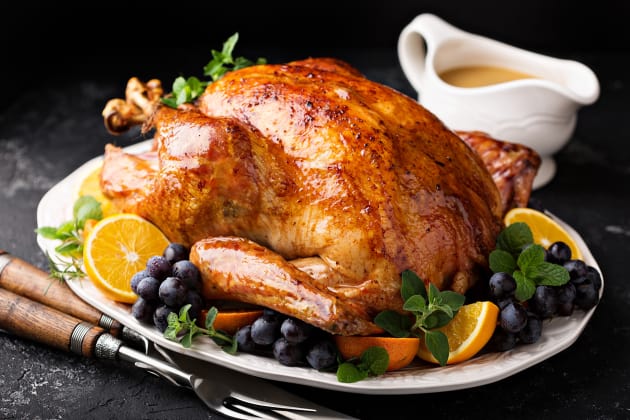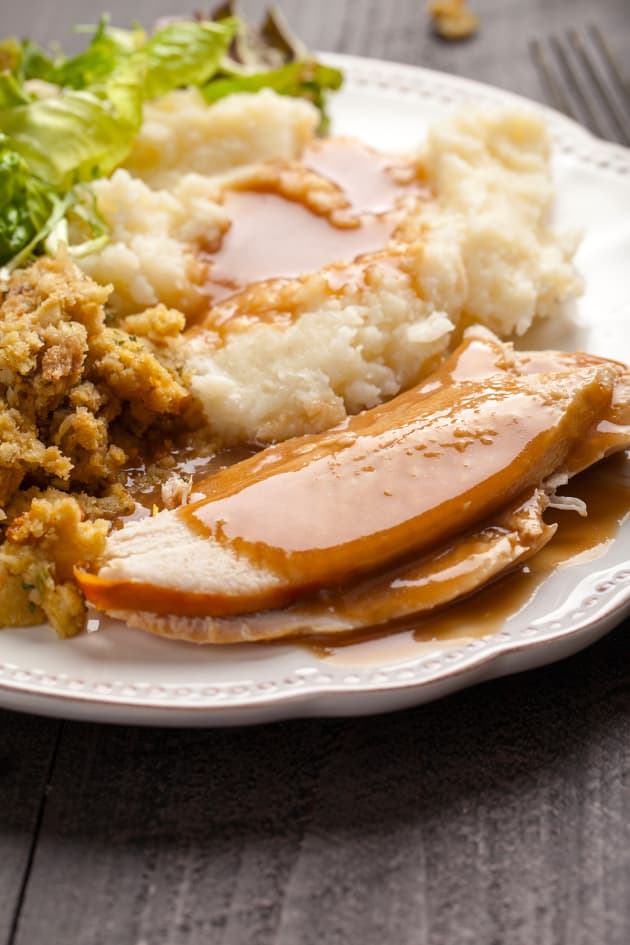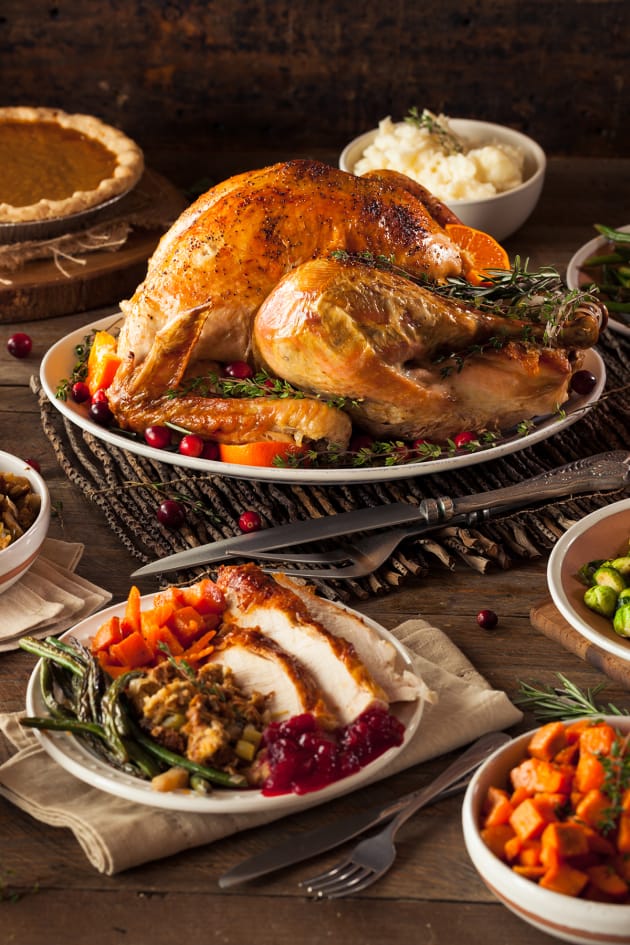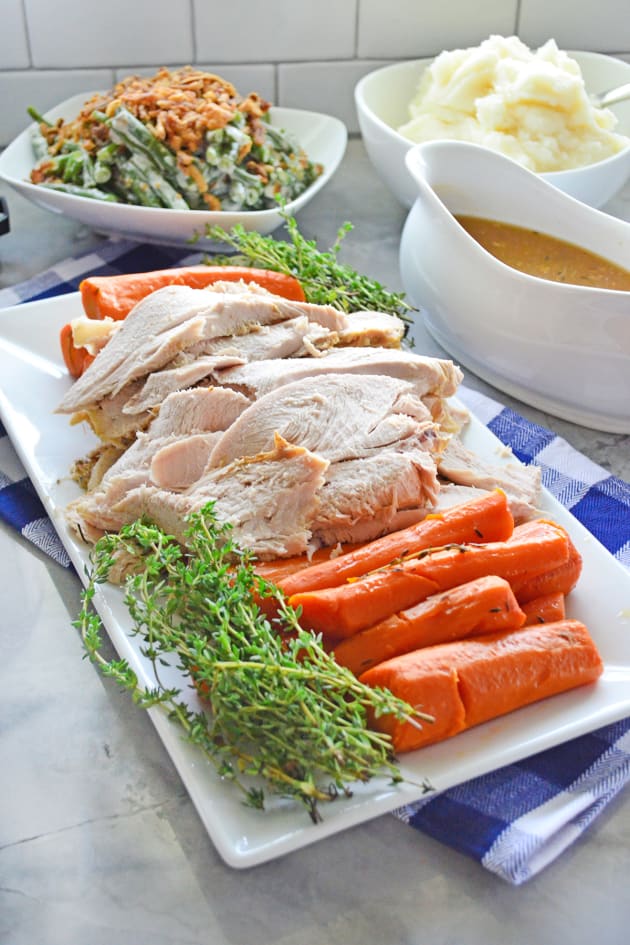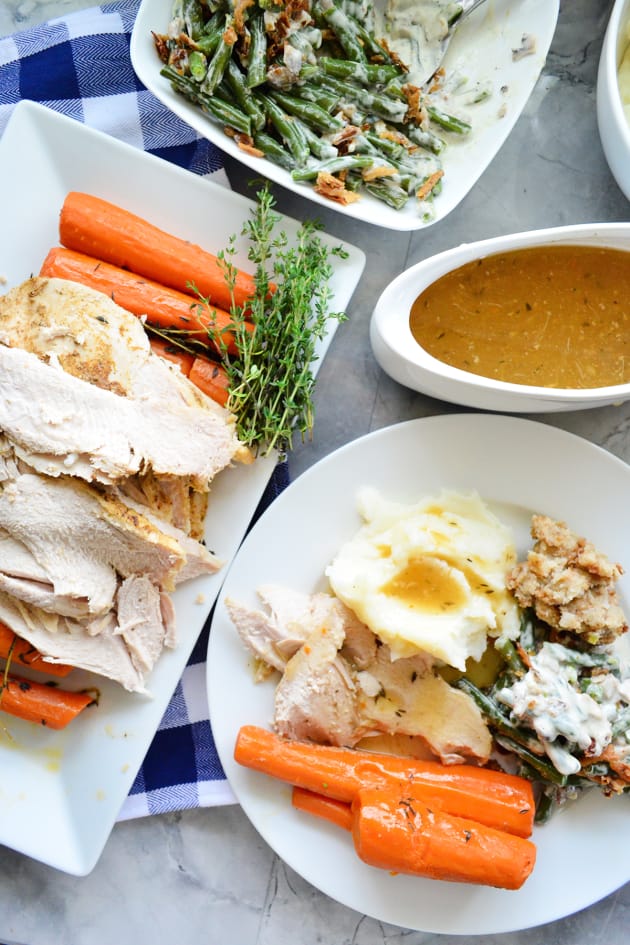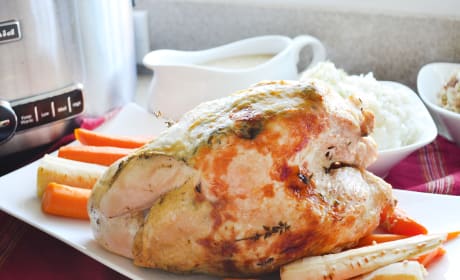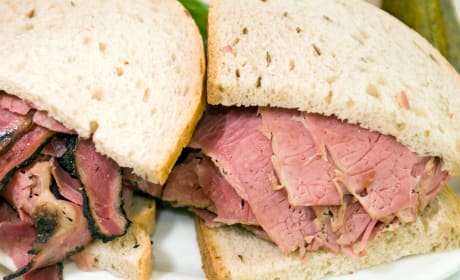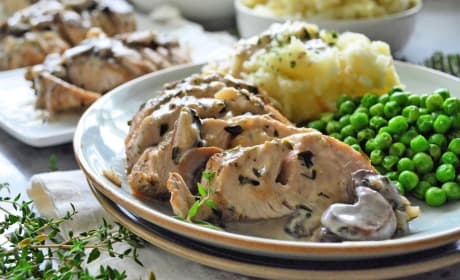How to Brine a Turkey
Cyd ConverseLearn how to brine a turkey to add flavor and improve its texture, giving you tender and juicy results every time
Brining turkey is a fantastic way to add flavor and make the meat juicy and tender. Best of all, learning how to brine a turkey is easy!
There are a few different ways it can be done - including using a wet brine and a dry brine - and you can easily adapt brining recipes to develop the flavors your family love best!
The basics of brining
The fundamental idea behind brining is using salt to add flavor to meat and to change its texture by breaking down its proteins. This keeps it nice and juicy whilst it's cooking - something that basting alone can't do.
Wet brining
Wet brining is the most commonly used method.
In its simplest form it involves filling a large container (large enough to hold the whole turkey) with a 50:50 solution of salt and water. The turkey is then placed inside and allowed to soak.
As it soaks, an exchange takes place between the water already in the flesh of the turkey and the brining liquid. Eventually, the salt level of both will be the same, meaning that the turkey will be tastier and more tender.
If you choose to use this method, there are a few precautions to follow.
First, you need to make absolutely sure that your brining solution is completely cool. The easiest way to quickly achieve a cool solution is to boil up just enough water to melt the salt, then use cold water to top it up to the desired quantity.
You then need to to transfer the turkey - in its brining solution - to the fridge. Don't try to brine a turkey at room temperature as it may encourage the growth of food-borne bacteria.
Finally, be sure to set a timer so that you don't brine the turkey for too long. If you brine it for too long it will taste very salty and the texture will become unpleasantly tender - almost mushy!
As a rough guide, you should brine a turkey for around 1 hour per pound.
Dry brining
Although it's less common, there are a couple of advantages to dry brining, which involves rubbing the whole bird with salt. For one, it creates a crispier skin after cooking than you get when you brine turkey in a solution.
Secondly, it doesn't take up as much space - you can just put the turkey into a food-safe bag, rather than in a container large enough to hold the bag and the solution.
The results are still good, because rubbing salt on the surface of the skin still draws out moisture from the turkey, which is then reabsorbed along with the salt.
Variations on a basic brine
Whilst all you need to brine a turkey is salt (plus water for wet brining), you can make things even more interesting by adding other ingredients and aromatics.
These can range from sugar - which adds a lovely sweetness to the meat - to all sorts of herbs and spices.
You might even like to start to start saving all your vegetable and herb scraps in the freezer to use in your brining solutions - it's a great way to avoid waste and add loads of flavor!
Tips for the perfect Thanksgiving turkey
Here are some more more tips to ensure your Thanksgiving turkey is the talk of the town!
Cyd is a native of Upstate New York, born to a family of women who love to cook and host parties. She shares her love of all things food, home and entertaining on her blog, The Sweetest Occasion and on Instagram.
Tags: How To Guides, Turkey, Thanksgiving

